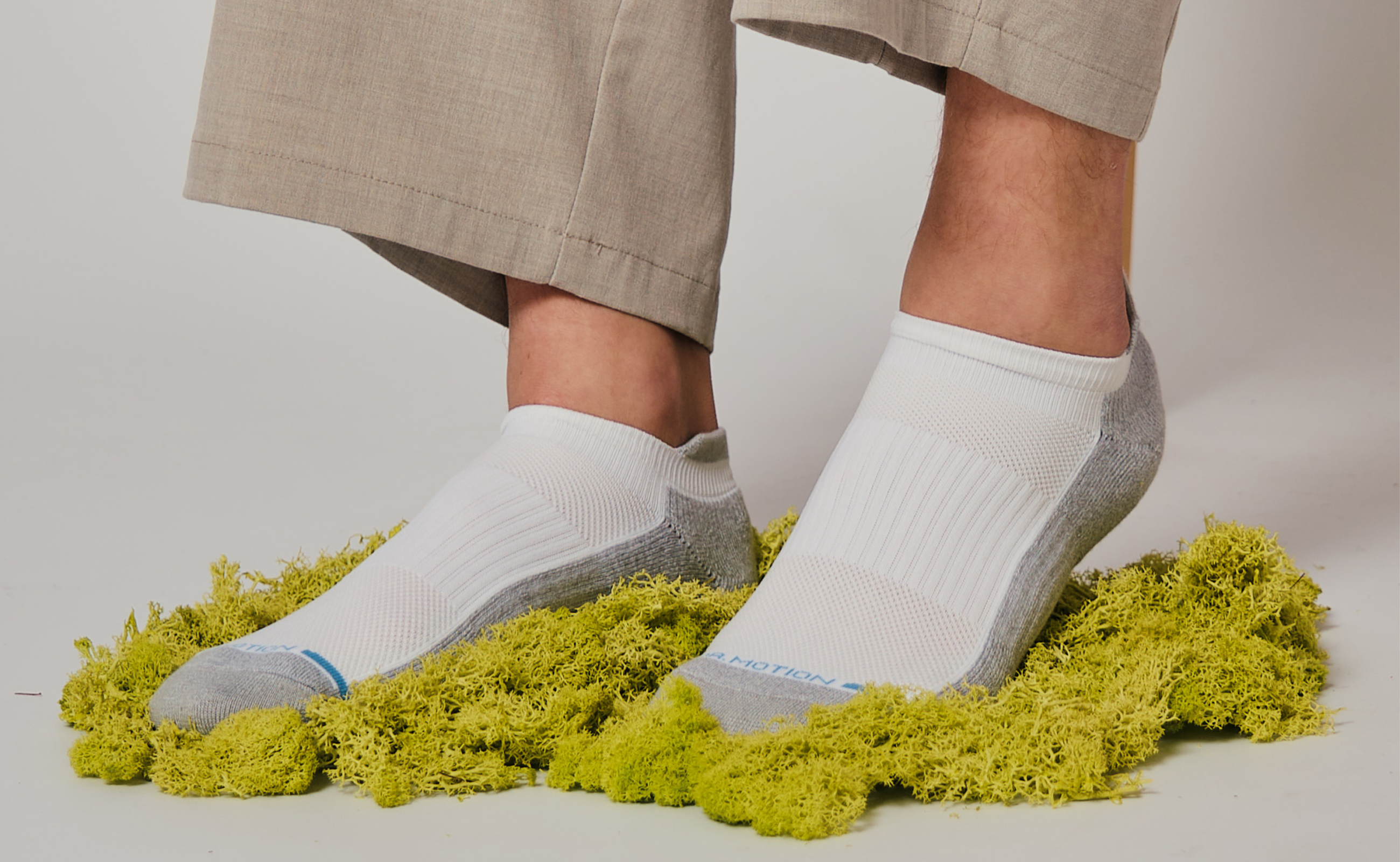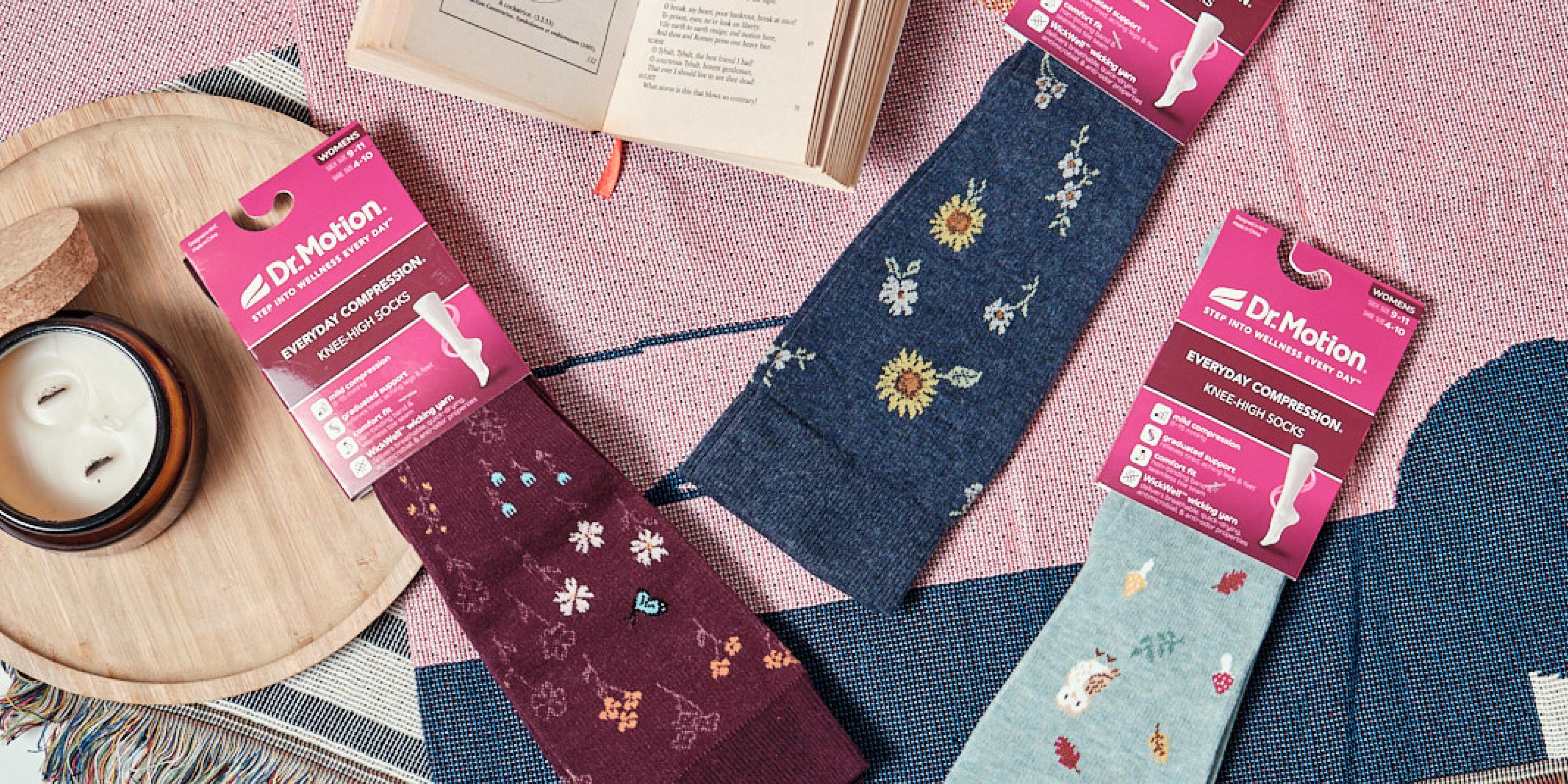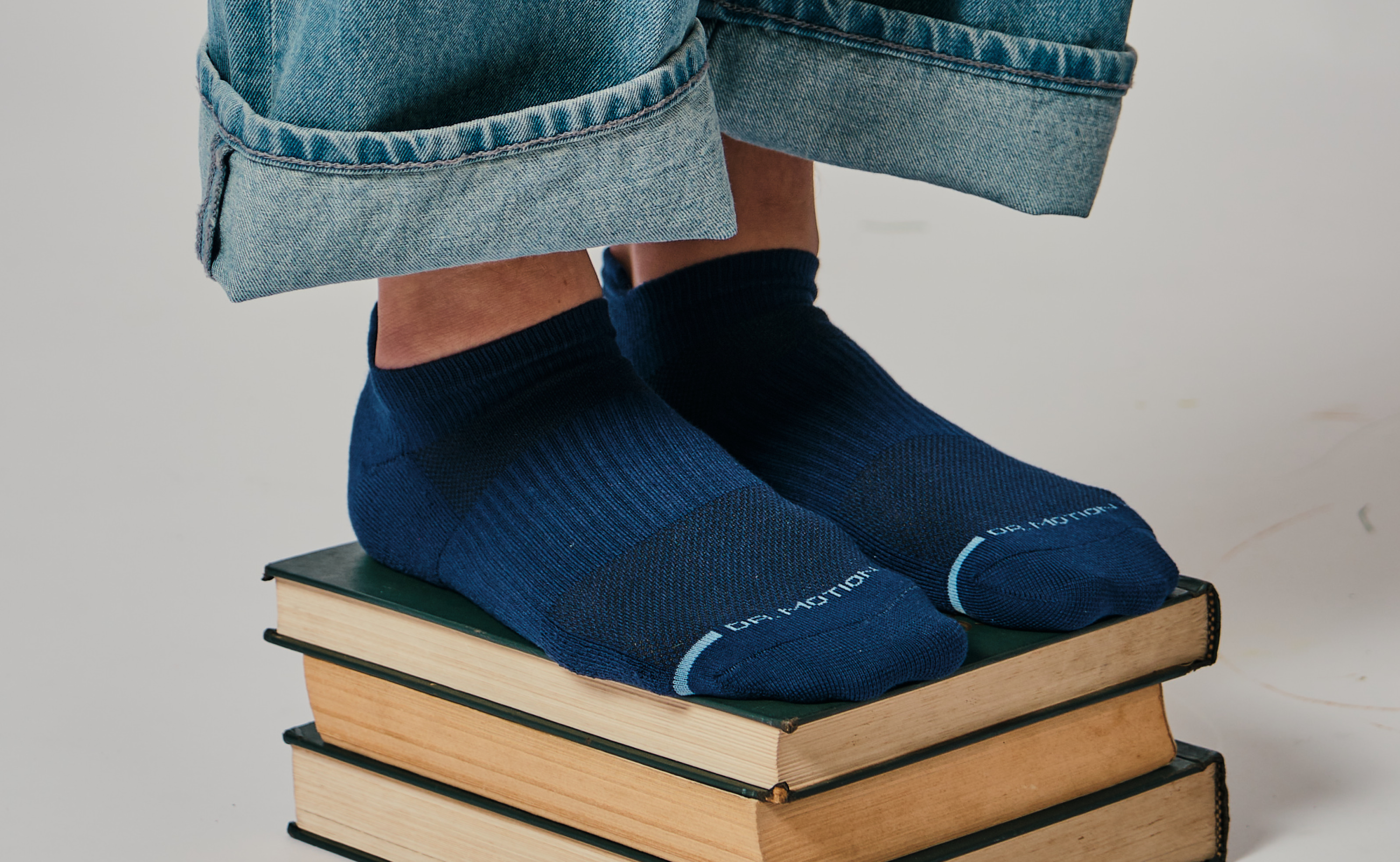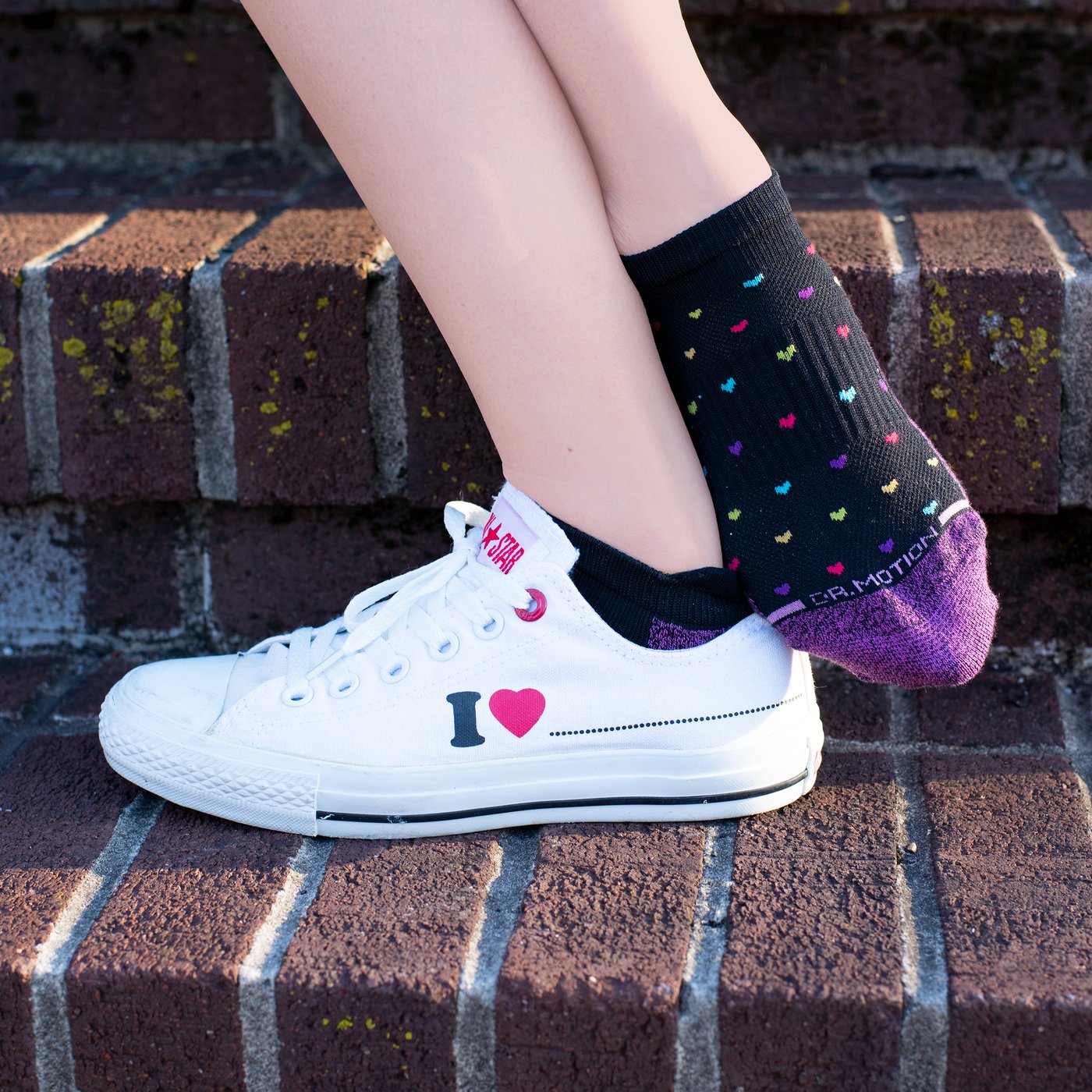Compression Socks and Restless Leg Syndrome
Restless Leg Syndrome (RLS), or Willis-Ekbom Disease, is a neurological condition that causes an uncontrollable urge to move the legs—often accompanied by uncomfortable sensations.
Not everyone experiences it, but for those who do, it can be especially disruptive during rest or sleep. Although RLS requires proper medical diagnosis and treatment, many individuals find symptom relief through supportive measures—like compression socks.
The medical community is discovering unique ways to use compression therapy for increased blood flow to the lower limbs. Research shows the benefits of compression socks include help for those who suffer from restless leg syndrome. People with restless leg syndrome often have trouble falling or staying asleep due to uncomfortable leg sensations or twitching.
In this article, we will discuss how compression socks can help reduce symptoms and improve both sleep duration and quality.
What Is Restless Leg Syndrome And Its Symptoms?
Research has shown that restless leg syndrome, or RLS, is likely associated with neurological conditions that trigger strange and uncomfortable leg movements at night. Often, patients describe the sensations and symptoms in different ways, including:
-
An itching, pulling, or twitching sensation deep within the legs.
-
The sensations typically occur while sitting, lying down, or sleeping.
-
Some relief is found by rubbing, stretching, or kicking the legs.
-
These compulsive leg movements are unpleasant and prevent quality sleep.
Symptoms of restless leg syndrome can range from mild to severe and may occur every night or a few times a month. RLS is more common in older adults, women, and about 40 percent of pregnant women.
How To Stop Restless Leg Syndrome
A medical examination is needed to determine if the person is experiencing restless leg symptoms or whether there is another problem causing the unusual leg movements. These may include an iron deficiency, sleep apnea, or mental conditions such as excessive tension and anxiety.
Lifestyle changes can also help alleviate mild to moderate restless leg symptoms and promote better sleep quality. Avoiding tobacco and alcohol, reducing caffeine intake, and maintaining a consistent sleep pattern are some lifestyle changes that may help RLS.
How Compression Socks Can Help RLS
While compression socks are not a cure for Restless Leg Syndrome (RLS), they may help manage symptoms in some individuals by improving blood circulation and providing gentle pressure to the lower limbs. RLS is believed to involve both neurological and vascular components, and studies suggest that enhanced circulation can play a role in reducing leg discomfort.
Increasing blood flow and massaging the leg muscles are two benefits of wearing compression socks for RLS. Even a mild level of graduated pressure in the 15-20 mmHg compression range can provide relief and benefit for those with restless leg syndrome.
In addition to relaxing the leg muscles with gentle, graduated pressure, compression socks for RLS will also decrease leg swelling and improve the circulation of blood throughout the lower body. Patients often tend to experience a better quality of sleep due to more oxygen reaching the legs and less pooling of blood in the lower extremities.
Who Can Use Compression Socks for RLS
Compression socks may be beneficial for individuals experiencing mild to moderate symptoms of Restless Leg Syndrome (RLS), particularly those who also suffer from poor circulation, swelling, or varicose veins.
However, they are not a primary treatment for RLS. Compression therapy can help alleviate discomfort by improving blood flow and reducing fatigue in the legs, which may ease the urge to move them.
People with the following conditions may benefit from using compression socks for RLS:
-
Mild to moderate RLS symptoms: Individuals who experience occasional discomfort or restlessness in their legs, especially at night, may find relief from compression therapy.
-
Chronic venous insufficiency or varicose veins: Compression socks help with venous return, which can improve overall circulation in the legs.
-
Pregnant women: Pregnancy-related swelling and RLS symptoms may improve with the use of compression socks.
-
People with a sedentary lifestyle: Those who sit or stand for long periods, such as office workers or long-distance travelers, might benefit from improved circulation.
However, individuals with severe arterial disease, skin conditions, or certain circulatory problems should consult a healthcare provider before using compression socks for restless leg syndrome.
How To Use Compression Socks For Restless Leg Syndrome
To effectively use compression socks for RLS, it’s important to follow proper usage guidelines to ensure comfort and maximize benefits.
Here’s how to use them:
-
Select the correct compression level: Socks with a mild compression range of 8–15 mmHg or 15–20 mmHg are usually recommended. It’s best to start with lower compression levels and increase gradually if needed.
-
Wear them during the evening or bedtime: RLS symptoms are often more severe at night, so it’s beneficial to wear compression socks in the evening, especially before going to bed. This may help prevent the discomfort that often disrupts sleep.
-
Gradual Adaptation: If you're new to compression socks, start by wearing them for short periods (e.g., 1-2 hours) to allow your body to adjust. Over time, you can increase the duration of use as needed.
-
Consult with a Healthcare Provider: Before starting any compression therapy, it’s important to discuss with a doctor, especially if you have other health conditions such as arterial disease or skin issues. They can help determine the appropriate compression level and ensure that the socks won't interfere with any other treatments.
Sleeping in Compression Socks With RLS
Sleeping in compression socks can be beneficial for some individuals with RLS, as they may help improve circulation, reduce leg discomfort, and alleviate the urge to move the legs during rest. However, it's important to consult with a healthcare provider to ensure it's appropriate for your specific condition and to determine the right compression level.
More Tips for Restless Legs
-
Massage legs regularly
Many people who suffer from RLS have found significant relief from symptoms with regular leg massage. And, when combined with other methods to safely manage RLS symptoms, many patients experience more relaxed leg muscles. Moderate pressure is best for relaxing leg muscles, and the right amount of gentle massaging action can be had by wearing the right compression socks.
Consider compression socks for restless leg syndrome, designed to apply 20-30 mmHg of graduated pressure. The improved blood circulation will help your legs feel relaxed, with the added benefit of preventing blood clots.
-
Consider hot or cold therapy
Before going to bed at night, consider taking a warm, soaking bath to relax your muscles and your mind. For more severe restless leg symptoms, alternating warm and cool packs may bring relief. Hot and/or cold therapy is used to reduce sensations in the limbs to promote blood flow. More specifically, heat therapy expands the blood vessels to relax legs and increase blood flow, while cold therapy can reduce the twitching and crawling sensations or signals that are sent to the brain.
Avoid activities before bed that can cause fatigue, which tends to worsen symptoms of RLS. Practice good sleep hygiene by keeping the room cool, quiet, and comfortable.
Key Takeaways
-
Restless leg syndrome is a neurological condition that triggers strange and uncomfortable leg movements at night.
-
Compression socks for restless leg syndrome will relax the leg muscles with gentle and graduated pressure.
-
Lifestyle changes like a regular sleep schedule and cutting caffeine also help alleviate RLS symptoms.
-
Additionally, hot and/or cold therapy is used to reduce sensations in the limbs to promote blood flow.
Explore Dr. Motions’s Range of Compression Socks
For a wide selection of compression socks for men, women, and sports, visit Dr. Motion online or at your favorite retailer. Our Everyday Compression™ socks apply just the right amount of graduated pressure to gently massage legs and increase blood flow for better sleep.
Disclaimer: This article provides information solely for educational purposes, including but not limited to text, graphics, images, and other materials contained herein. This article is not intended to substitute for professional medical advice, diagnosis, or treatment. Always seek the advice of your physician or another qualified healthcare provider with any questions you may have regarding a medical condition.












